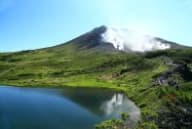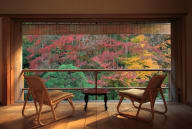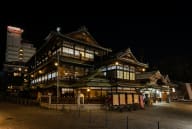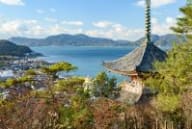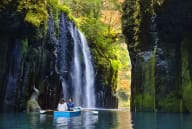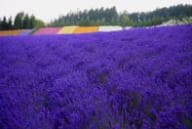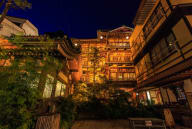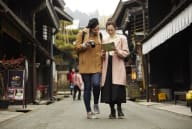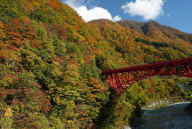The Nakasendo Rail Trail: A Journey Through History, Nature, and Culture
Whether you trek or take the train, travel along this historic highway — your way
Whether for health-related reasons or a trend towards more off-the-beaten-path destinations, walking holidays have become an increasingly popular mode of travel in the last decade. The Nakasendo is an excellent choice for regular travelers keen to get out of the cities without having to trek long distances.
Translating to “the road through the mountains,” the historic Nakasendo highway was one of five major routes during the Edo period (1603-1867). It connects Kyoto and Edo (present-day Tokyo) through the mountain ranges of Japan’s main island, over a distance of approximately 530km long. Along this highway were numerous post towns — 69 in total — small localities with inns, restaurants, and other facilities that catered to travelers going back and forth from the two cities.

“Magome” is written with the characters for “horse” and “basket,” indicating that travelers had to leave their horses at the inn on account of the town’s steep streets.
Many of these post towns have long since disappeared, but there are still a few that survive and are well worth visiting, not only for their historical value, but also for the beautiful landscapes, traditional buildings, countryside culture, and a glimpse at what the olden days of Japan might have been like. There’s no need to walk the entire stretch of the highway, as the existing towns are well-connected and easily accessible by train. You can hike for a few hours, or visit several post towns by train and stay for a few nights along the way — the choice is yours!
Read on for an introduction to some of the major post towns along the JR Chuo Main Line.
1. Magome-juku, JR Nakatsugawa Station

The water wheel inside this large watermill is still used to generate some of the electricity used in this town.
Magome-juku is among the most popular and beautifully preserved post towns along the Nakasendo. Perched on the slope of a mountain in the Kiso Valley, the main street is a steep, winding stone walkway lined with traditional buildings. It’s a stiff climb to the top of town, but looking behind every now and then instantly rewards you with gorgeous views of the valley and mountains in the distance.
Perhaps one of the best things about Magome-juku is that it’s still a living, functioning town despite its growing tourist appeal. Many of the buildings are still occupied by residents — many of whom are local farmers – so it never feels like a relic that’s here only for tourists.
After enjoying the bucolic view from the top of town, more adventurous travelers might wish to try the scenic 3-hour hike to the next post town, Tsumago-juku. Difficulty-wise, the route between Magome and Tsumago is relatively accessible for beginners, and as such this trail remains one of the most popular sections of the Nakasendo.
Location Information
Magome-juku (Website)
Address: Magome, Nakatsukawa City, Gifu Prefecture 508-0502
How to get there: From JR Tokyo Station, take the Tokaido Shinkansen to JR Nagoya Station. Then, take the Limited Express Shinano on the JR Chuo Main Line to JR Nakatsugawa. From there, a regular bus goes to Magome-juku, which in turn is connected to Tsumago-juku by bus.
For the adventurous, the walk between Magome-juku and Tsumago-juku is between 2 ~ 3 hours.
2. Tsumago-juku, JR Nagiso Station
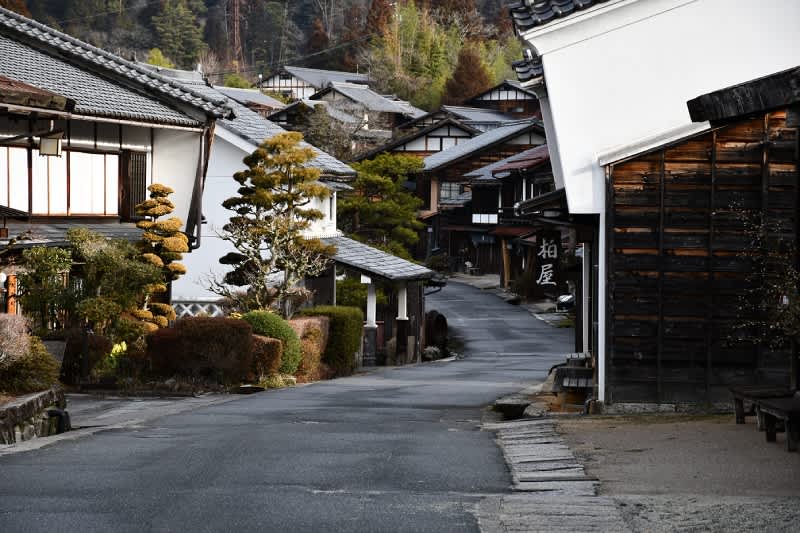
Tsumago-juku became a Nationally Designated Architectural Preservation Site in 1976. Photo Credit: Nagiso Tourism Association
Tsumago was the 42nd post town along the Nakasendo and is today widely acknowledged as one of the best-preserved post towns in Japan. Its old-world charm is thanks to the town’s residents, who chose to ban cars along Tsumago’s main street during the day and hide the power lines — a common feature in many older towns – to preserve the look and feel of their home.

Like many traditional buildings of the period, the Wakihonjin featured a sunken hearth where food could be cooked over charcoal. Photo Credit: Nagiso Tourism Association
Tsumago is an excellent place to dive into the history of the Nakasendo, as it has retained its honjin (principal inn for VIPs) and wakihonjin (secondary inn for travelers of lower status). The latter’s main building dates back to the 19th century, and there’s also a museum where visitors can learn about the area.
To fully immerse yourself in the atmosphere of Tsumago, consider staying at one of the many minshuku (family-run bed-and-breakfasts) and ryokan in town; a walk along the street after dark amidst the quiet of the mountains is a truly magical experience.
Location Information
Tsumago-juku (Website)
Address: 2196-1 Azuma, Nagiso-machi, Kiso District, Nagano Prefecture 399-5302
How to get there: From JR Nagoya Station, transfer to the Limited Express Shinano on the JR Chuo Main Line or a regular train to Nagiso Station. From Nagiso Station, Tsumago is a 10-minute bus ride. Buses are infrequent, but taxis are available. Visitors can also hike to Tsumago from the neighboring post town of Magome.
View on maps
3. Fukushima-juku, JR Kiso-Fukushima Station

The town’s free public foot bath can be found along the banks of the Kiso River. Photo Credit: Kiso Ontake Tourism Office
Nestled in the heart of the picturesque Kiso Valley, Fukushima-juku was the mid-point of the Nakasendo, and one of four major security checkpoints during the Edo period. Today, it’s a beautiful place to spend a few nights strolling along the river, visiting the various museums and temples, hiking in the surrounding mountains, or relaxing in the baths at one of the ryokans in town.

The distinctive white-and-black patterned earthen walls known as namako-kabe or “sea cucumber walls” were a popular style for wealthy merchants’ houses. Photo Credit: Kiso Ontake Tourism Office
There are several attractions of note here. One is the reconstructed barrier station, or historical security checkpoint. Another is the Yamamura Residence, once owned by the family that governed the Kiso Valley during the Edo period, and now open to the public. Both display clothing, weapons, and other artifacts that paint a fascinating picture of life during the Edo period. Last but not least is Kozenji Temple, home to one of Japan’s largest Zen rock gardens.
Location Information
Fukushima-juku (Website)
Address: 5254 Fukushima, Kiso-machi, Kiso District, Nagano Prefecture 397-0001
How to get there: Take the Limited Express Shinano from JR Nagoya Station to JR Kiso Fukushima Station. This is an approximately 1 hour and 30 minute journey. It is a 10-minute walk to Fukushima-juku from Kiso Fukushima Station.
View on maps
4. Narai-juku, JR Narai Station
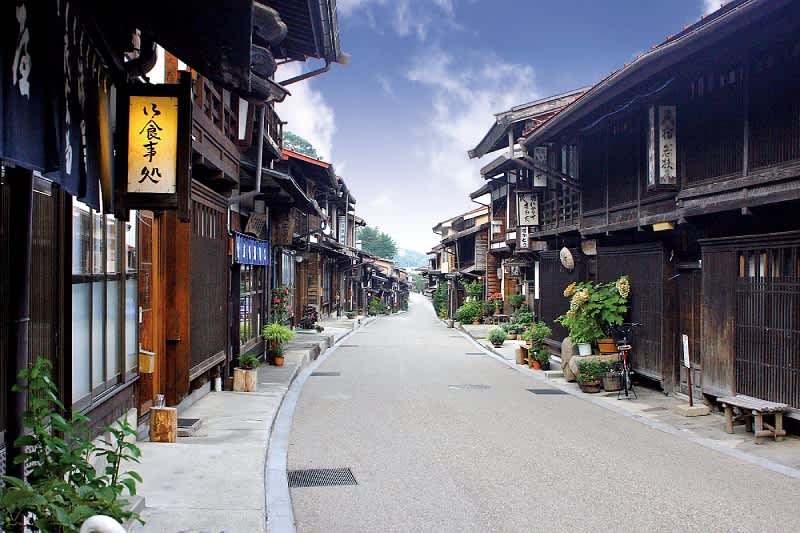
Cars are prohibited in Narai-juku, and electric cables are largely concealed. Photo Credit: 奈良井宿観光協会
Narai-juku was one of the wealthiest post towns along the Nakasendo, thanks to the high volume of visitors needing a place to rest and recover after traversing the difficult Torii Pass nearby. Visitors today can still experience its former glory and atmosphere, as the Edo period architecture along a one-kilometer stretch of the main street has been meticulously preserved.

Narai Kiso Bridge is constructed entirely of cypress wood, and spans the Narai River near the historic post town. Photo Credit: 奈良井宿観光協会
Easily accessible by local train, Narai-juku is an exquisite example of a post town and ideal for spending a leisurely day or two. Beautiful little shrines and temples can be found just off the main road. The two-story wooden buildings house charming cafes, teahouses, soba restaurants, and sake shops. Of particular note are the area’s artisans, who specialize in crafts ranging from lacquerware to woodcarving, making Narai an ideal place to pick up a few locally-made souvenirs.
Location Information
Narai-juku (Website)
Address: Narai, Shiojiri City, Nagano Prefecture 399-6303
How to get there: Narai-juku is accessible via the local train on the JR Chuo Main Line. JR Narai Station is about 3 hours on the Limited Express Azusa train from JR Shinjuku Station, changing trains in Shiojiri.
From JR Nagoya Station, it's a 2 hour and 3 minute journey, changing from the Limited Express Shinano to the local line at Kiso Fukushima.
5. Shimosuwa-juku, JR Shimosuwa Station

Shimosuwa-juku was a flourishing post town during the Edo Period thanks to its location between two challenging mountain passes, the Wada Pass and the Shiojiri Pass. Photo Credit: Suwa Regional Tourism Federation
Located 2.5 hours from Tokyo, Shimosuwa was an especially popular rest stop along the Nakasendo thanks to its abundance of hot springs — ideal for recuperating after long days of traveling on foot. Shimosuwa also marked the terminus of the Koshu Kaido, another major highway that connected Edo with Kai Province (modern-day Yamanashi Prefecture), thus allowing it to flourish as a post town during the Edo period.

Suwa Taisha Main Hall Photo Credit: Suwa Regional Tourism Federation
Today, this compact little town receives far less foot traffic than nearby cities like Matsumoto. Still, it rewards the visitor willing to travel a little further with beautiful scenery, a 400-year-old castle, an abundance of foot baths and sake breweries, one of the finest shrines in Nagano Prefecture, and even views of Mt. Fuji from Lake Suwa. For those planning well in advance – specifically for spring 2028 – the Onbashira Festival, a set of awe-inspiring rituals held every seven years at Suwa Taisha Shrine, will be a must-see.
At Suwa Taisha (the Suwa Grand Shrine complex), the Onbashira Festival is considered the biggest and most important Shinto ritual. As an aspect of Suwa’s proud traditional culture, it is carried out by shrine parishioners in the six municipalities in the Suwa area. The tradition has been passed down through the generations uninterrupted for more than 1,200 years.
Location Information
Shimosha, Harumiya (Suwa Taisha Shrine) (Website)
Address: 193 Daimon, Shimosuwa-machi, Suwa District, Nagano Prefecture 393-0092
How to get there: Shimosuwa-juku is accessible via the local train on the JR Chuo Main Line. JR Shimosuwa Station is about 2 hours and 20 minutes on the Limited Express Azusa train from JR Shinjuku Station.
Conclusion
Getting out to more rural areas along the Nakasendo isn’t difficult, thanks to the convenience of modern trains. Whether you choose to hike through the mountains en route or immerse yourself in the atmosphere of these historic post towns, experiencing life along the Nakasendo has never been easier. If you’re looking for alternative destinations in more remote parts of Japan or seeking first-timer-friendly hiking routes, why not consider adding these places to your next itinerary?
Explore Japan with us. Follow us on Facebook and Instagram for more bite-sized information about Japan!
















